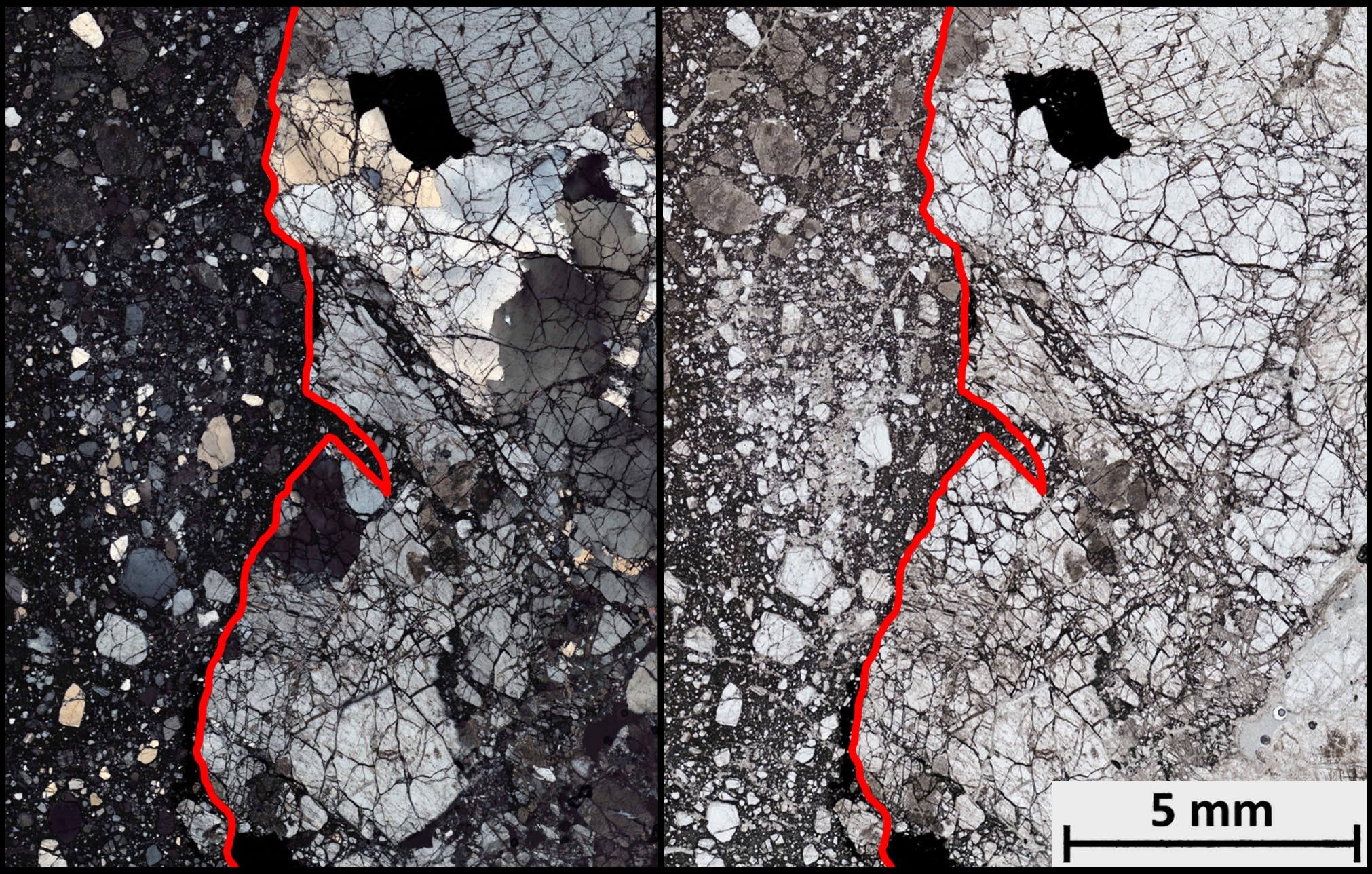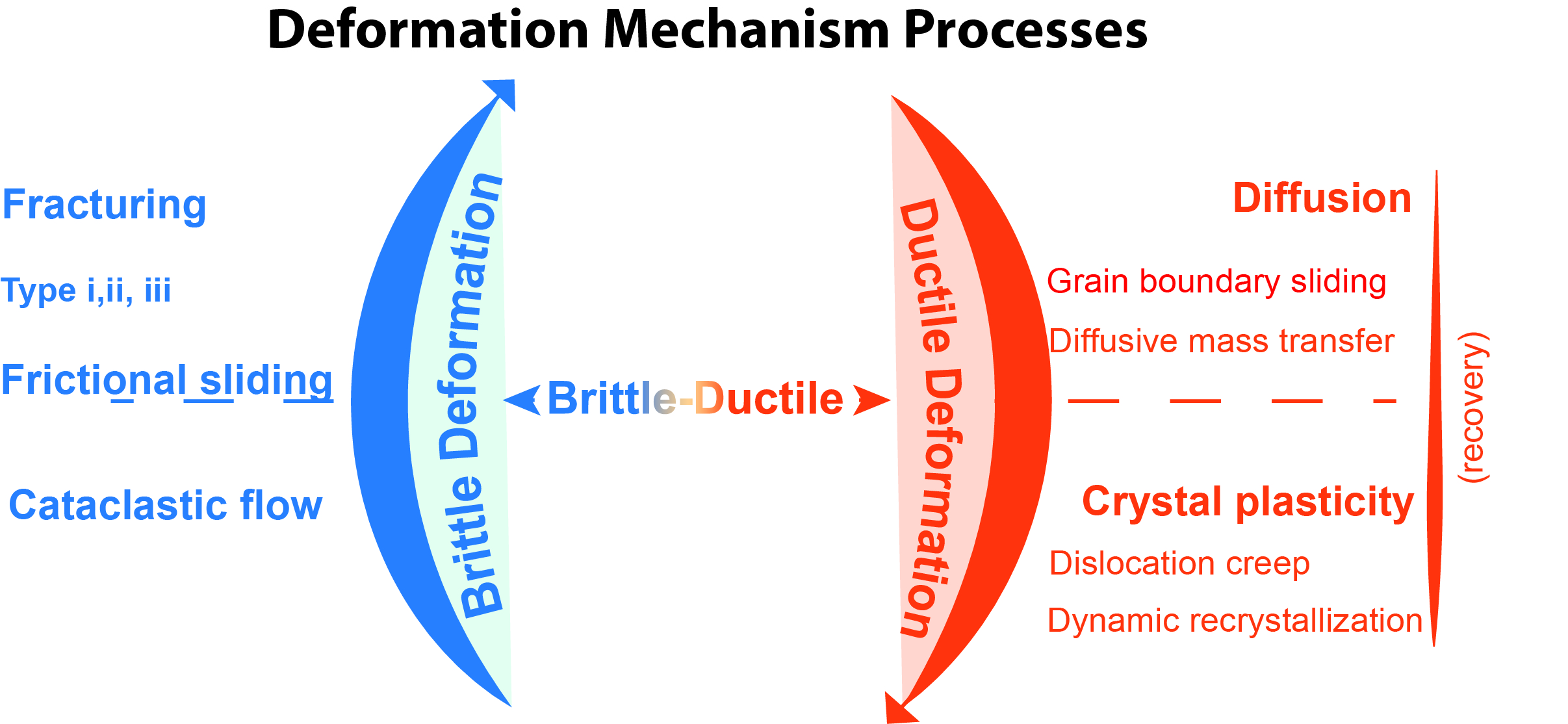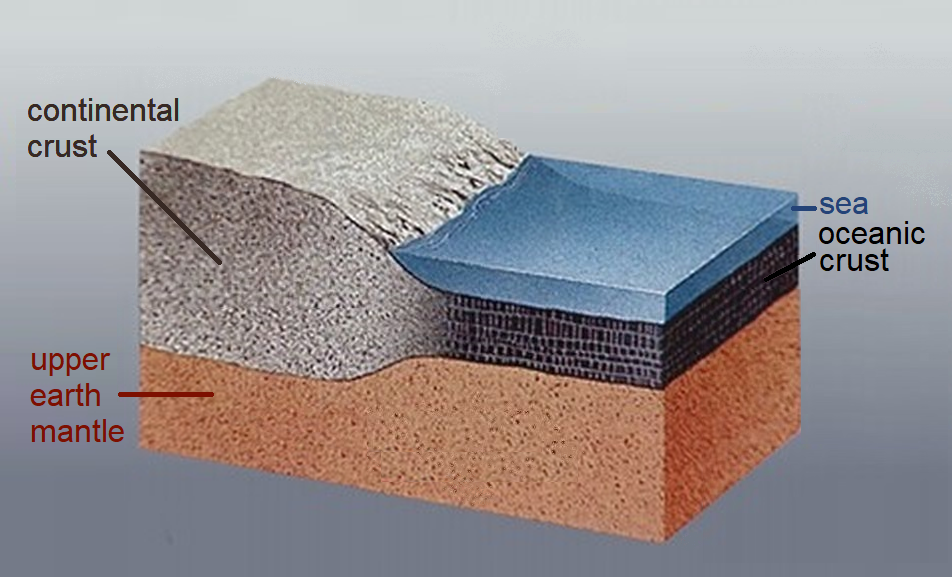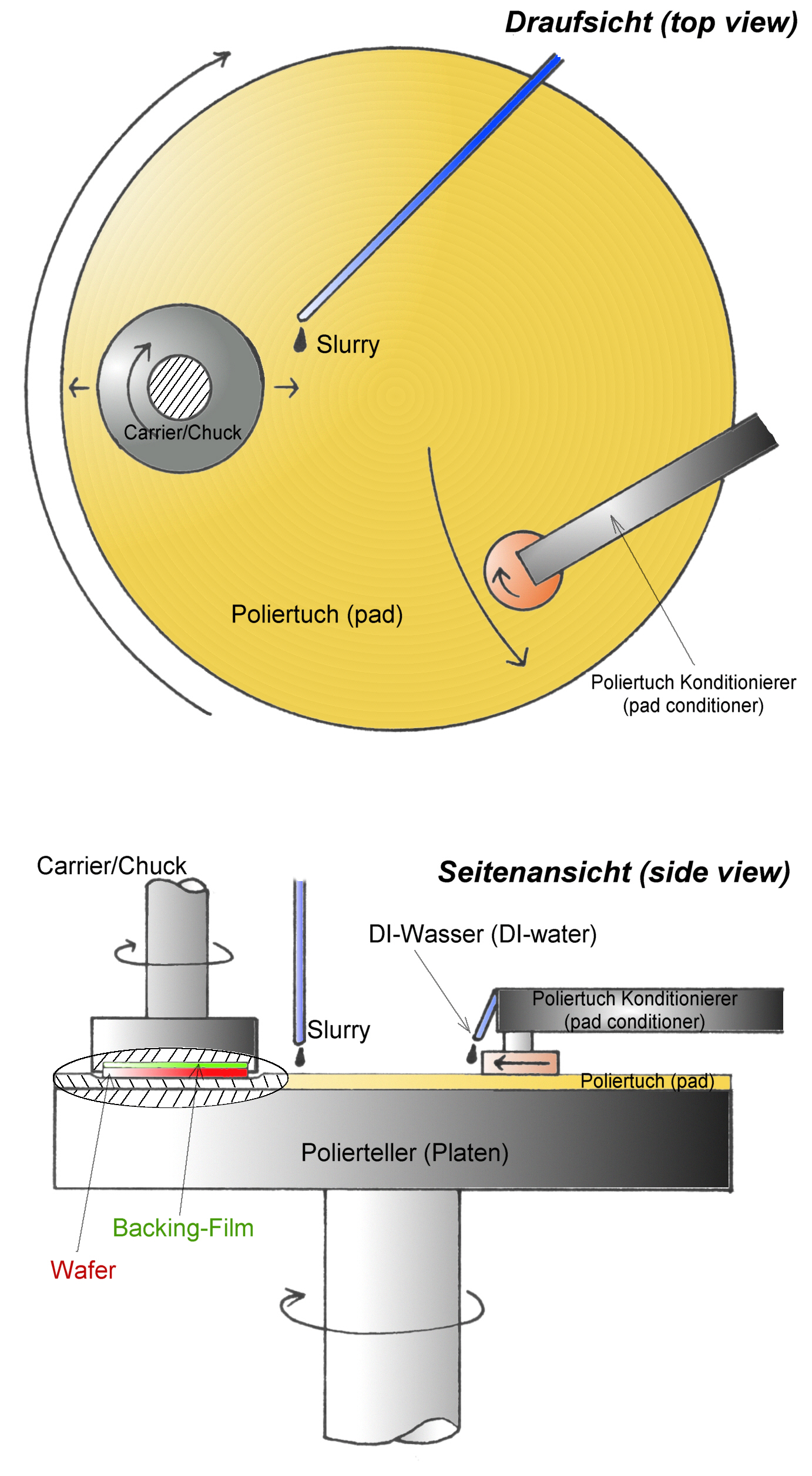|
Cataclasite
Cataclasite is a cohesive granular Fault (geology)#Fault rock, fault rock. Comminution, also known as cataclasis, is an important process in forming cataclasites. They fall into the category of cataclastic rocks which are formed through faulting or fracturing in the upper Crust (geology), crust. Cataclasites are distinguished from fault gouge, which is incohesive, and fault breccia, which contains coarser fragments. Types Cataclasites are composed of fragments of the pre-existing wall rock as well as a Matrix (geology), matrix consisting of crushed microfragments, which cohesively holds the rock together. There are different types of classification schemes for cataclasites in the fault rock literature. The original classification scheme by Sibson classifies them by their proportion of fine-grained matrix to angular fragments. The term fault breccia is used for describing a cataclasite with coarser grains. A fault breccia is a cataclastic rock with clasts that are larger t ... [...More Info...] [...Related Items...] OR: [Wikipedia] [Google] [Baidu] |
Mylonite
Mylonite is a fine-grained, compact metamorphic rock produced by dynamic recrystallization of the constituent minerals resulting in a reduction of the grain size of the rock. Mylonites can have many different mineralogical compositions; it is a classification based on the textural appearance of the rock. Formation Mylonites are ductilely deformed rocks formed by the accumulation of large shear strain, in ductile fault zones. There are many different views on the formation of mylonites, but it is generally agreed that crystal-plastic deformation must have occurred, and that fracturing and cataclastic flow are secondary processes in the formation of mylonites. Mechanical abrasion of grains by milling does not occur, although this was originally thought to be the process that formed mylonites, which were named from the Greek μύλος ''mylos'', meaning mill. Mylonites form at depths of no less than 4 km. There are many different mechanisms that accommodate crystal-plastic ... [...More Info...] [...Related Items...] OR: [Wikipedia] [Google] [Baidu] |
Fault (geology)
In geology, a fault is a Fracture (geology), planar fracture or discontinuity in a volume of Rock (geology), rock across which there has been significant displacement as a result of rock-mass movements. Large faults within Earth's crust (geology), crust result from the action of Plate tectonics, plate tectonic forces, with the largest forming the boundaries between the plates, such as the megathrust faults of subduction, subduction zones or transform faults. Energy release associated with rapid movement on active faults is the cause of most earthquakes. Faults may also displace slowly, by aseismic creep. A ''fault plane'' is the Plane (geometry), plane that represents the fracture surface of a fault. A ''fault trace'' or ''fault line'' is a place where the fault can be seen or mapped on the surface. A fault trace is also the line commonly plotted on geological maps to represent a fault. A ''fault zone'' is a cluster of parallel faults. However, the term is also used for the zone ... [...More Info...] [...Related Items...] OR: [Wikipedia] [Google] [Baidu] |
Fault Gouge
Fault gouge is a type of fault rock best defined by its grain size. It is found as incohesive fault rock (rock which can be broken into its component granules at the present outcrop, only aided with fingers/pen-knife), with less than 30% clasts >2mm in diameter. Fault gouge forms in near-surface fault zones with brittle deformation mechanisms. There are several properties of fault gouge that influence its strength including composition, water content, thickness, temperature, and the strain rate conditions of the fault. Formation Fault gouge forms from localization of strain within fault zones under brittle conditions near the Earth’s surface. The grinding and milling from the two sides of the Fault (geology), fault moving along each other results in grain size reduction and fragmentation. First, a fault breccia will form with more fragmental material and with continued grinding the rock will transition into a fault gouge with fewer and smaller fragments, enhancing fluid-roc ... [...More Info...] [...Related Items...] OR: [Wikipedia] [Google] [Baidu] |
Cataclastic Rock
A cataclastic rock is a type of fault rock that has been wholly or partly formed by the progressive fracturing and comminution of existing rocks, a process known as ''cataclasis''. Cataclasis involves the granulation, crushing, or milling of the original rock, then rigid-body rotation and translation of mineral grains or aggregates before lithification. Cataclastic rocks are associated with fault zones and impact event breccias. Classification Various classification schemes have been proposed for the cataclastic rocks, but changes in understanding of the processes involved in their formation and better knowledge of the variety of such rocks has made a simple classification difficult, particularly where distinctions cannot be made in hand specimens. Sibson's 1977 classification of fault rocks was the first to include an understanding of the deformation mechanisms involved and all subsequent schemes have been based on this. Fault breccias have been further classified in terms of the ... [...More Info...] [...Related Items...] OR: [Wikipedia] [Google] [Baidu] |
Fault Breccia
Fault breccia, or tectonic breccia, is a breccia (a rock type consisting of angular clasts) that was formed by tectonic forces. Fault breccia is a tectonite formed by localized zone of brittle deformation (a fault zone) in a rock. Brecciation in fault zones influences fault zone hydrogeology in its interaction with groundwater and petroleum deposits. Origin Fault breccias are tectonites formed primarily by tectonic movement along a localized zone of brittle deformation (a fault zone) in a rock formation or province. The grinding and milling occurring when the two sides of the fault zone moving along each other results in a material that is made of loose fragments. Because of this fragmentation fault zones are easily infiltrated by groundwater. Secondary minerals such as calcite, epidote, quartz or talc can precipitate from the circulating groundwater filling the voids and cementing the rock. However, when the tectonic movement along the fault zone continues the cement itself ... [...More Info...] [...Related Items...] OR: [Wikipedia] [Google] [Baidu] |
Deformation Mechanism
In geology and materials science, a deformation mechanism is a process occurring at a microscopic scale that is responsible for Deformation (physics), deformation: changes in a material's internal structure, shape and volume. The process involves planar Discontinuity (geotechnical engineering), discontinuity and/or displacement of atoms from their original position within a crystal lattice structure. These small changes are preserved in various microstructures of materials such as rocks, metals and plastics, and can be studied in depth using optical or digital microscopy. Processes Deformation mechanisms are commonly characterized as Brittle deformation, brittle, Ductility (Earth science), ductile, and brittle-ductile. The driving mechanism responsible is an interplay between internal (e.g. composition, grain size and lattice-preferred orientation) and external (e.g. temperature and fluid pressure) factors. These mechanisms produce a range of micro-structures studied in rocks to co ... [...More Info...] [...Related Items...] OR: [Wikipedia] [Google] [Baidu] |
Cataclasis
A cataclastic rock is a type of fault rock that has been wholly or partly formed by the progressive fracturing and comminution of existing rocks, a process known as ''cataclasis''. Cataclasis involves the granulation, crushing, or milling of the original rock, then rigid-body rotation and translation of mineral grains or aggregates before lithification. Cataclastic rocks are associated with fault zones and impact event breccias. Classification Various classification schemes have been proposed for the cataclastic rocks, but changes in understanding of the processes involved in their formation and better knowledge of the variety of such rocks has made a simple classification difficult, particularly where distinctions cannot be made in hand specimens. Sibson's 1977 classification of fault rocks was the first to include an understanding of the deformation mechanisms involved and all subsequent schemes have been based on this. Fault breccias have been further classified in terms of thei ... [...More Info...] [...Related Items...] OR: [Wikipedia] [Google] [Baidu] |
Foliation (geology)
Foliation in geology refers to repetitive layering in metamorphic rocks.Marshak, Stephen, ''Essentials of Geology,'' W. W. Norton 3rd Ed, 2009 Each layer can be as thin as a sheet of paper, or over a meter in thickness. The word comes from the Latin , meaning "leaf", and refers to the sheet-like planar structure. It is caused by shearing forces (pressures pushing different sections of the rock in different directions), or differential pressure (higher pressure from one direction than in others). The layers form parallel to the direction of the shear, or perpendicular to the direction of higher pressure. Nonfoliated metamorphic rocks are typically formed in the absence of significant differential pressure or shear. Foliation is common in rocks affected by the regional metamorphic compression typical of areas of mountain belt formation ( orogenic belts). More technically, foliation is any penetrative planar fabric present in metamorphic rocks. Rocks exhibiting foliation i ... [...More Info...] [...Related Items...] OR: [Wikipedia] [Google] [Baidu] |
Continental Crust
Continental crust is the layer of igneous, metamorphic, and sedimentary rocks that forms the geological continents and the areas of shallow seabed close to their shores, known as '' continental shelves''. This layer is sometimes called '' sial'' because its bulk composition is richer in aluminium silicates (Al-Si) and has a lower density compared to the oceanic crust, called '' sima'' which is richer in magnesium silicate (Mg-Si) minerals. Changes in seismic wave velocities have shown that at a certain depth (the Conrad discontinuity), there is a reasonably sharp contrast between the more felsic upper continental crust and the lower continental crust, which is more mafic in character. Most continental crust is dry land above sea level. However, 94% of the Zealandia continental crust region is submerged beneath the Pacific Ocean, with New Zealand constituting 93% of the above-water portion. Thickness and density The continental crust consists of various layers, with ... [...More Info...] [...Related Items...] OR: [Wikipedia] [Google] [Baidu] |
Quartz
Quartz is a hard, crystalline mineral composed of silica (silicon dioxide). The Atom, atoms are linked in a continuous framework of SiO4 silicon–oxygen Tetrahedral molecular geometry, tetrahedra, with each oxygen being shared between two tetrahedra, giving an overall chemical formula of Silicon dioxide, SiO2. Quartz is, therefore, classified structurally as a Silicate mineral#Tectosilicates, framework silicate mineral and compositionally as an oxide mineral. Quartz is the second most abundant mineral in Earth's continental crust, behind feldspar. Quartz exists in two forms, the normal α-quartz and the high-temperature β-quartz, both of which are chiral. The transformation from α-quartz to β-quartz takes place abruptly at . Since the transformation is accompanied by a significant change in volume, it can easily induce microfracturing of ceramics or rocks passing through this temperature threshold. There are many different varieties of quartz, several of which are classifi ... [...More Info...] [...Related Items...] OR: [Wikipedia] [Google] [Baidu] |
Comminution
Comminution is the reduction of solid materials from one average particle size to a smaller average particle size, by crushing, grinding, cutting, vibrating, or other processes. Comminution is related to pulverization and grinding. All use mechanical devices, and many types of mills have been invented. Concomitant with size reduction, comminution increases the surface area of the solid. For example, a pulverizer mill is used to pulverize coal for combustion in the steam-generating furnaces of coal power plants. A cement mill produces finely ground ingredients for portland cement. A hammer mill is used on farms for grinding grain and chaff for animal feed. A demolition pulverizer is an attachment for an excavator to break up large pieces of concrete. Comminution is important in mineral processing, where rocks are broken into small particles to help liberate the ore from gangue. Comminution or grinding is also important in ceramics, electronics, and battery research. Mech ... [...More Info...] [...Related Items...] OR: [Wikipedia] [Google] [Baidu] |






